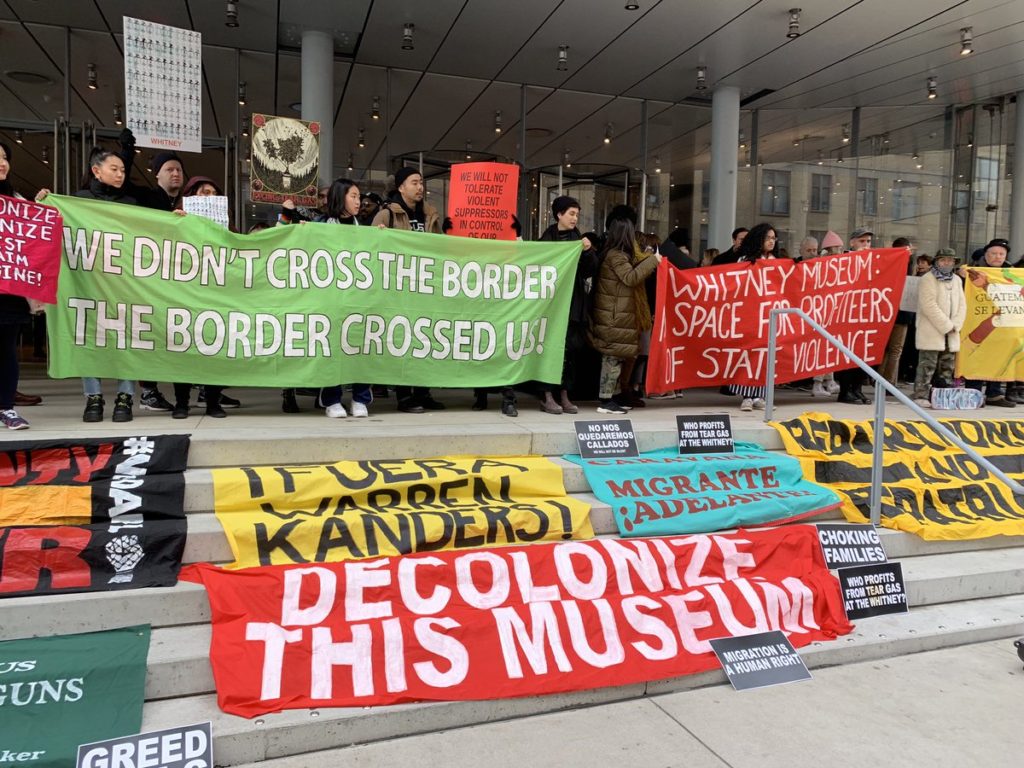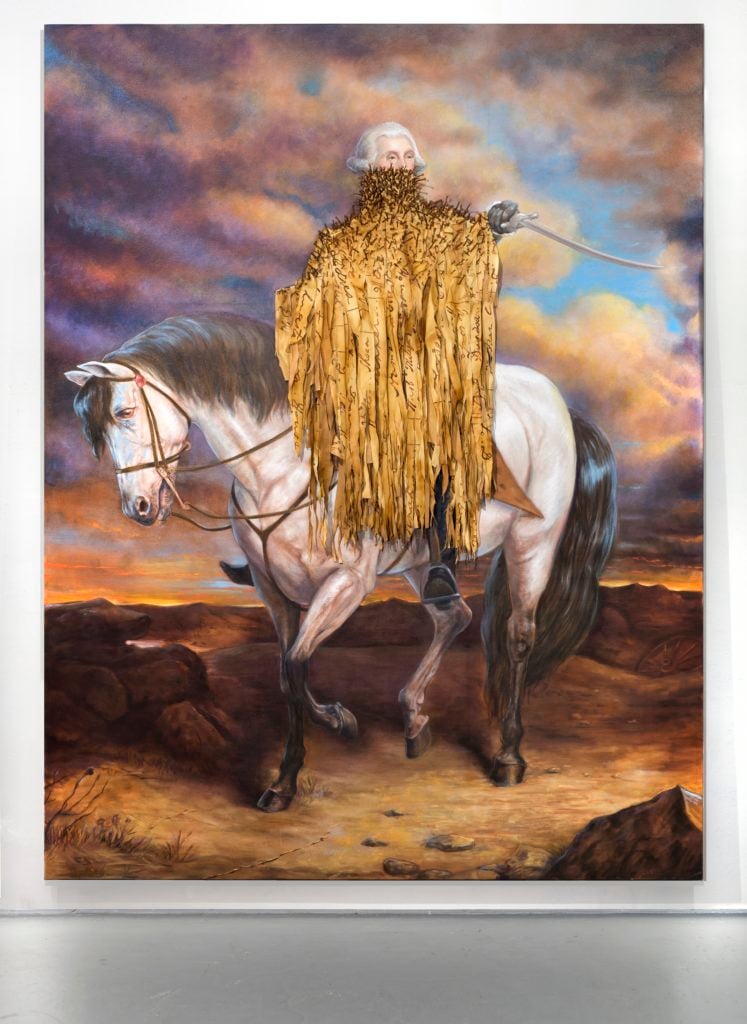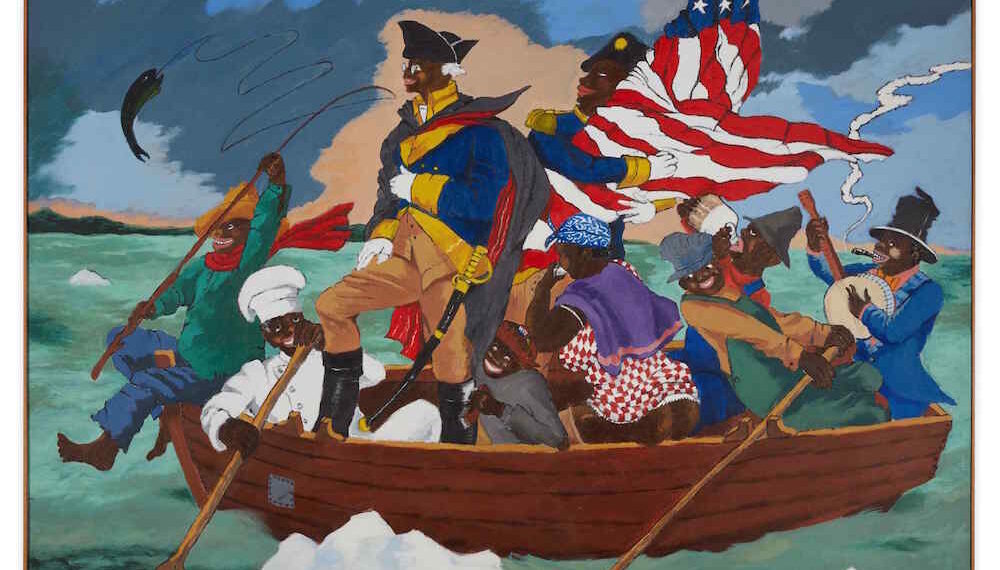Each Wednesday morning, Artnet Information brings you The Gray Market. The column decodes necessary tales from the earlier week—and affords unparalleled perception into the inside workings of the artwork trade within the course of.
This week, crossing the border between principle and follow…
JOURNEY VS. DESTINATION
On Sunday, New York Instances media columnist Ben Smith explored the progressive journey web site Atlas Obscura’s self-described “decolonization challenge.” Its targets and limits sketch out a helpful framework for art-market individuals—and art-market critics—as our area of interest trade struggles to deal with comparable inequities.
Atlas Obscura’s mission has all the time been to light up what typical journey guides would both ignore or elide a few slew of areas worldwide. After starting its life as a weblog targeted primarily on destination-specific lists and itineraries, the publication has expanded to serve up feature-length journalism, podcasts, on-line programs, and (previous to final 12 months’s shutdown) even away-from-the-keyboard experiences.
Nonetheless, 11 years after its founding, Atlas Obscura can also be within the midst of a reckoning. Underneath editorial director Samir Patel, the location is now reviewing, modifying, and supplementing (in Smith’s phrases) “a number of the 20,000 entries from a database, compiled by its neighborhood and employees, of curious locations all over the world in mild of the final 12 months’s shift in how People view their historical past.” Consider it as a return journey to scores of web sites from a newly woke perspective.
The bookends of Smith’s one-day ridealong with Patel crystallize the flavour of the reassessment: a truth-bomb viewing of George Washington’s dentures that exposed six of the enamel have been doubtless extracted from the poor for a charge, or from enslaved individuals by pressure; and a go to to a commemorative landmark in Inwood Hill Park bearing a plaque that distorts the character of the deal the Dutch used to grab Manhattan from its indigenous inhabitants.
(Trendy curricula have usually taught that the Native People outright bought the land for a grip of glass beads, however proof suggests they thought they have been solely licensing the land for cooperative use.)

A duplicate set of George Washington’s dentures with a duplicate of a letter of thanks the primary President wrote to his dentist. The actual dentures have a vastly extra unsettling historical past than you have been led to consider in elementary faculty. Photograph by SSPL/Getty Photos.
But Atlas Obscura’s historic revisionism additionally raises a brambly query for progressive globetrotters. Smith quotes Rafat Ali, founding father of the journey enterprise web site Skift, saying that journey writing is “all the time going to be outsiders trying in.” What I believe he means is that there’s a quasi-colonialist ethic constructed into the manufacturing and consumption of the shape at a base degree: Foreigners with cash to spare drop right into a far-flung location, expertise the native tradition as recreation, then return to their creature comforts when the prices of staying outweigh the advantages.
Is it attainable, then, that the one option to totally decolonize journey writing could be to close it down?
It seems that Patel, one of many fundamental forces behind Atlas Obscura’s decolonization challenge, really thinks the reply is perhaps sure. Smith relays Patel saying to him that “he’s unsure ‘decolonizing’ was the best phrase for the challenge,” with Patel including that “decolonization suggests elimination, and that’s not what we’re doing.”
Sure, the publication is channeling its protection by way of a fuller, extra worldly, extra equitable filter. A significant a part of this effort entails commissioning writing from non-white residents of locations overseas, in addition to from a extra inclusive array of U.S.-based expertise. Patel acknowledges this method “makes journey writing much less boring,” but it surely doesn’t decolonize the medium.
All of which leads us to the artwork market.

Decolonize This Place protests on the Whitney Museum of American Artwork. Photograph courtesy of @nycDSAantiwar.
EVOLUTION VS. REVOLUTION
“Decolonization” has been a news-making rallying cry within the artwork world since not less than the autumn of 2016. That was when Artists House hosted an exhibition by the MTL+ collective whose title, “Decolonize This Place,” now doubles because the identify of the multi-organization motion on the forefront of direct actions towards the Whitney, the Brooklyn Museum, the American Museum of Natural History, and different main establishments within the years since.
Though the phrase “decolonization” has seldom been invoked on the for-profit aspect of the trade, its power has more and more radiated into the artwork market. The previous three years (and counting) of sales, exhibitions, and illustration offers have been influenced by a rising urgency to rebalance the scales of fairness. After generations wherein well-off white Western males have been handled because the supreme arbiters of style on each the manufacturing and consumption aspect of the commerce, artwork has finally sprouted, if not a conscience, then not less than a consciousness of its biases.
But the outcomes have been blended whether or not considered by way of the prism of race, gender, or another identity-based trait. As of September 2018, works by Black artists comprised solely about 1.2 percent of all global auction sales in the course of the previous decade. (The determine plummeted to simply over one-quarter of 1 % in case you eliminated Jean-Michel Basquiat). Works by ladies fared higher, however solely barely, making up roughly two percent of worldwide sales under the hammer between 2008 and mid-2019.
The proportions have undoubtedly improved within the time since, and a DEI drive (variety, fairness, and inclusion) has been evident within the gallery sector, too. Nonetheless, I’d guess the enhancements have remained extra evolutionary than revolutionary. Practically 60 percent of artists signed by 70 galleries between March and November 2020 have been white, in accordance with an evaluation by my colleague Kate Brown.
Second-order questions gnaw on the edges of progress, too. To quote one instance, Black figurative painters have undoubtedly generated more cash in gross sales since 2018 than throughout another interval in market historical past. However Black collectors nonetheless really feel they’re usually being boxed out of alternatives to amass in-demand works, reinforcing the identical structural biases which have outlined the Western artwork commerce virtually since its inception.
I don’t suppose that is an accident or a momentary quirk of historical past. Simply as the one real option to decolonize journey writing could be to demolish it, it appears to me that the one real option to decolonize the artwork market could be to blow it up from the inspiration.

Titus Kaphar, Shadows of Liberty (2016). Courtesy of the artist and Jack Shainman Gallery.
CAPITAL VS. EQUITY
By definition, markets are programs that privilege wealth. Individuals with cash get what they need as a result of they will both meet a value that others can’t or as a result of their reputations make them extra fascinating clients than less-known people with the identical budgets.
Now, it’s true that class is sure up with race, gender, and different human attributes in a mind-mincing wire mesh of problems. Simply take a look at the info displaying that, to cite the New York Times, “Black boys raised on the prime… usually tend to turn into poor than to remain rich in their very own households,” whereas their white counterparts who “develop up wealthy are more likely to stay that approach.” Simply as damning are the statistics confirming that the Nice Shutdown has carried out disproportionate and egregious harm to women within the U.S. labor pressure. Myriad different research of inequity are about as straightforward to search out as considered one of your individual eyebrows.
But a market is barely designed to care concerning the thickness of a buyer’s bankroll, not why that bankroll is as thick or skinny as it’s. The system is logical, however not equitable. Not less than, not within the bigger social sense that we imply after we discuss fairness, participation, and particularly decolonization.
So simply as Atlas Obscura can’t decolonize journey writing with out obliterating the publication, the one option to really decolonize the artwork commerce could be to strap dynamite to the pillars of the market economic system. Motive being that markets are buildings that may solely ever privilege the logic of capital—and, with it, the biases of wealth creation and upkeep embedded in an unjust society.
Can the artwork market turn into extra equitable? Little question. We’re seeing some real efforts to result in that consequence now, and so they deserve help. The dangerous information is that these efforts will fall wanting full decolonization except or till programs a lot greater than our area of interest trade (the labor market, the authorized system, the tax code, and extra) are radically revised to remove centuries of hurt.
The excellent news, nevertheless, is that Atlas Obscura proves within the realm of journey media that significant evolutions might be applied inside particular person organizations proper now. These within the artwork market ought to comply with its itinerary in their very own territory ASAP. Readers must also take note the pure limits of the journey—and look elsewhere in the event that they wish to see the complete panorama remade from the bottom up.
That’s all for this week. ‘Til subsequent time, bear in mind: The tip of 1 highway is barely the beginning of one other.
Comply with Artnet News on Fb:
Want to stay ahead of the art world? Subscribe to our newsletter to get the breaking news, eye-opening interviews, and incisive critical takes that drive the conversation forward.
Supply: news.artnet.com



